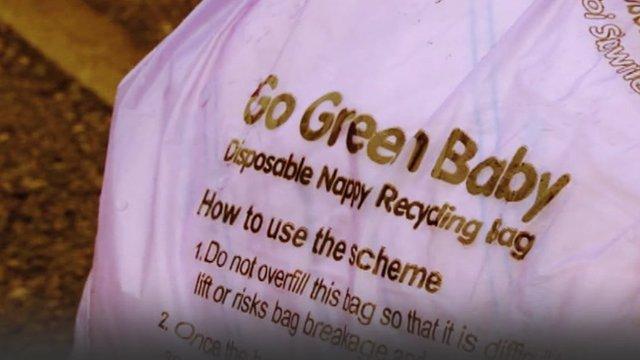What happens to recyclable rubbish put in the wrong bin?
- Published
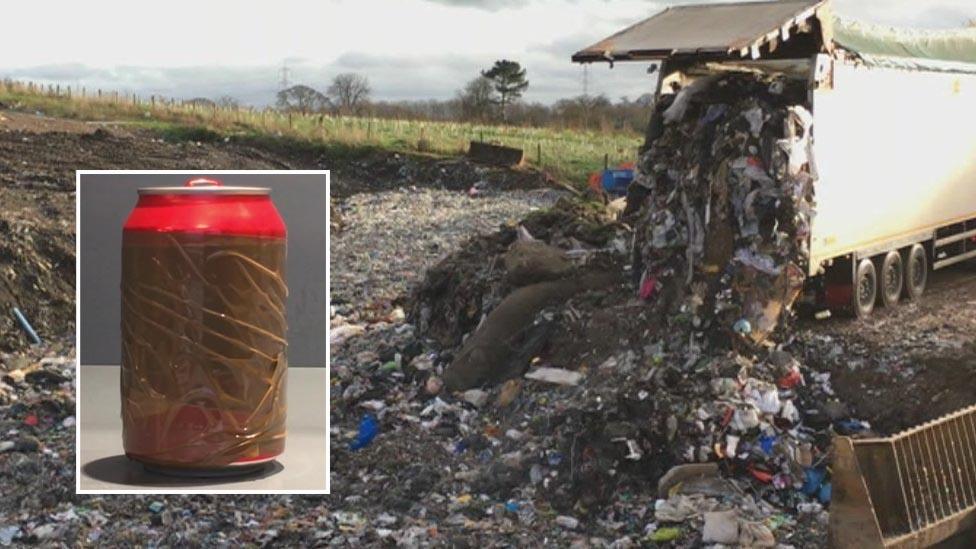
Cory Environmental's 30-hectare Hafod Landfill site, near Johnstown, Wrexham
An average of 1,250 tonnes of Welsh rubbish - about the weight of 155 double-decker buses - is sent to landfill every day.
The total amount has dropped from 641,000 tonnes in 2012/13 to 453,000 tonnes in 2014/15, external - a 30% fall in three years - with the amount spent on landfill having fallen by at least 23% in the last four years.
However, £130,000 is still being spent on Welsh landfill every day, according to figures obtained by BBC Wales.
So, what happens to a piece of recyclable rubbish after it is dropped into a bin bag headed for the dump?
Take, for instance, an empty aluminium drink can.
BBC Wales follows the journey of an aluminium can from the bin to landfill
It gets binned at a home in Ruthin, Denbighshire, before being put out for refuse collectors on a Tuesday.
From there, it is driven to a transfer station half a mile (0.8km) away, where it is moved to a lorry with about 20 tonnes of other waste.
The articulated lorry drives its load 20 miles (32km) to Cory Environmental's Hafod Landfill site, near Johnstown, Wrexham.
It is then tipped on to the enormous dunes of rubbish - the site receives about 110,000 tonnes a year - and is ploughed with the surrounding junk into layers of waste by a giant £250,000 compactor.
How long will the can remain there before it eventually breaks down?
"It'll probably be there forever," said Ian Craven, Cory's area manager.

Refuse collectors from Denbighshire council take in the latest batch of non-recyclable waste
Scanning the mind-boggling channels of waste, you can see more crushed and twisted cans scattered around it. Lots of them.
Cory has planning permission to fill the site until 2043, with three million cubic metres of space still vacant.
The firm plans to make the site as green and attractive as possible, with trees and wildflower planting to create wildlife habitats, attractive for species such as the great crested newt.
The contaminated water - or leachate - and gasses are extracted from the waste mass, before finished areas are sealed with a capping layer of clay and topped with soil.
"People think it's just a hole in the ground but hopefully we will produce something that is of benefit to the environment and that people can eventually use and enjoy," Mr Craven said.
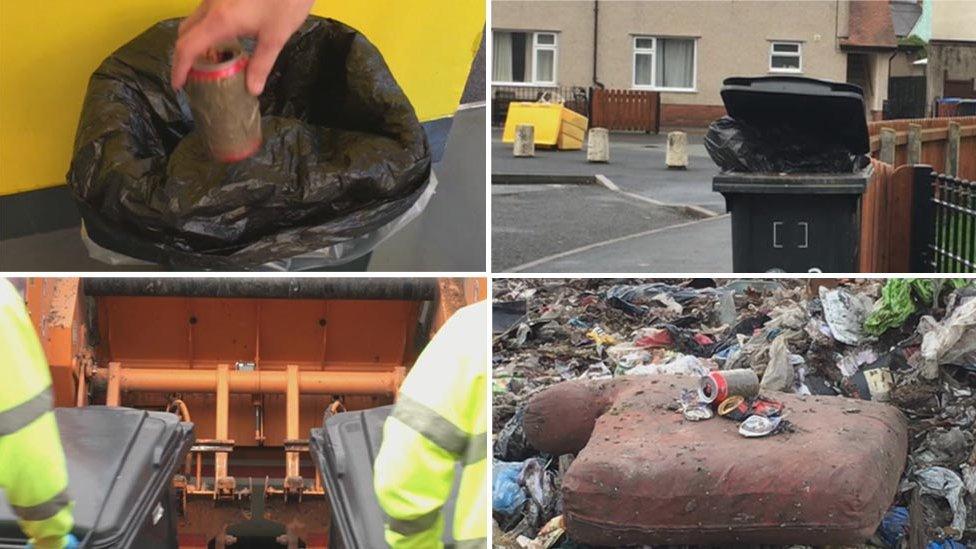
But the scale of the public cost of sending recyclable and compostable waste to landfill remains unappealingly massive.
Denbighshire council spent more than £1.4m on landfill and incineration last year.
Alan Roberts, senior waste officer at the authority, said it could save up to £500,000 a year if people put all their waste into the correct bin.
'Wrong container'
"Our recycling is at a very high level, comparatively, but it could be higher. Currently, around about 63% of the rubbish is recycled.
"A very significant proportion of what we collect in people's black wheelie bins is still recyclable material which has been put in the wrong container."
He estimated 20% of black bin waste collected was food and a further 20% was paper, cardboard and other items, all of which could all be recycled.
Councils with highest recycling rates
2014-15
65.9%
Denbighshire
-
65.4% Pembrokeshire
-
63.2% Monmouthshire
-
61.6% Ceredigion
There is, he explained, still a "yuck factor" when it comes to storing food waste separately.
"People don't appreciate that they do really have food waste," he added. "But of course, things like bread crusts, vegetable peelings, even tea bags and coffee grounds actually do tend to come out of most kitchens."
Overall, the annual amount of biodegradable municipal waste (food, paper, and garden waste) from Wales sent to landfill has dropped from over 850,000 tonnes in 2005/6 to 256,000 tonnes in 2014/15 - a 70% reduction.
But how do you "nudge" - as Denbighshire puts it - people into being even more disciplined with their unwanted leavings?
"The approach we have taken has really been about removing the barriers to recycling and also, at the same time, making it somehow less convenient to choose not to recycle," Mr Roberts said.
Will not co-operate
Measures include smaller refuse wheelie bins and larger ones for recycling and, occasionally, enforcement action and even prosecution.
Mr Roberts said Denbighshire gets "massive support" from residents, but there are some individuals who simply will not cooperate.
For 2014/2015, it had the highest rate, external of any Welsh council for the percentage of its overall waste that was reused, recycled or composted - 65.9%.
But, like four more Welsh councils, Denbighshire's annual spend on landfill actually rose over the last four years. This, it said, is largely due to increases in landfill tax.
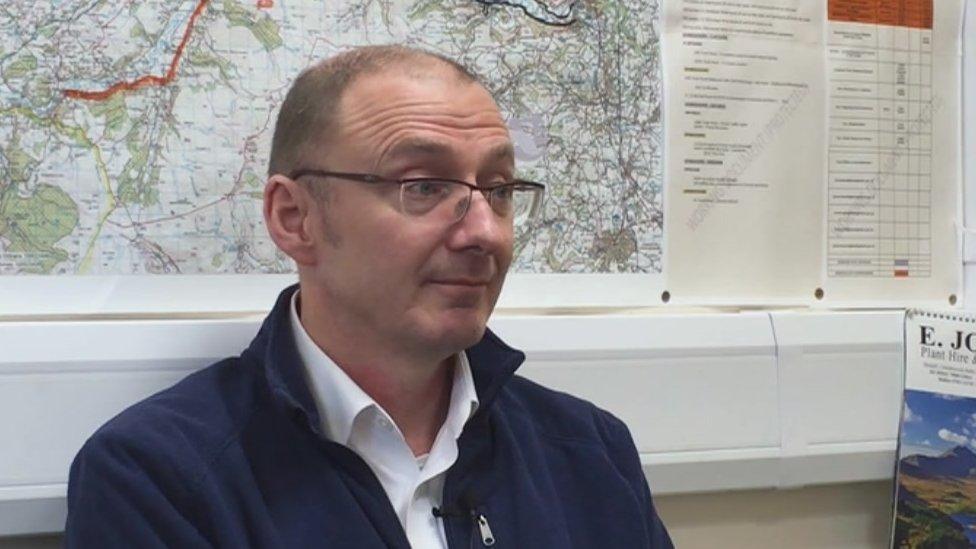
Senior waste officer Alan Roberts said recycling rates are high in Denbighshire but £500,000 could still be saved
The Welsh government has targeted councils with recycling 58% of their waste by 2016, with that eventually rising to 100% by 2050.
Seven authorities had achieved the 2016 benchmark as of August, with Blaenau Gwent having the lowest rate of the rest, at 50%.
Denbighshire sends about a third of its non-recyclable waste to landfill, with the rest processed into a refuse-derived fuel, which is then burned to generate electricity and heat.
Victorian times
Some councils, such as Monmouthshire, dispose of almost all of their non-recyclable rubbish using these kinds of methods, such as energy from waste systems.
But for those areas still relying heavily on landfill to swallow their imponderable supply of waste, there remains an ignominious and airtight time capsule marking their legacy below ground.
"There are stories of old landfill sites that have been dug into from Victorian times and it is still possible to read the newsprint," Mr Roberts added, explaining that even organic waste takes much longer to degrade inside landfill.
"The waste will sit there."

Images and video
By Michael Burgess and Philip John
- Published21 January 2016
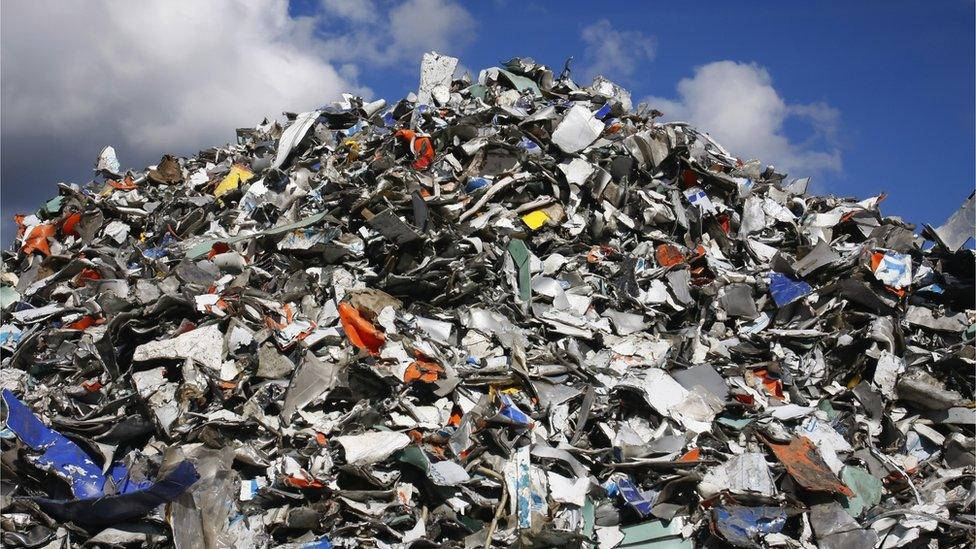
- Published27 July 2015
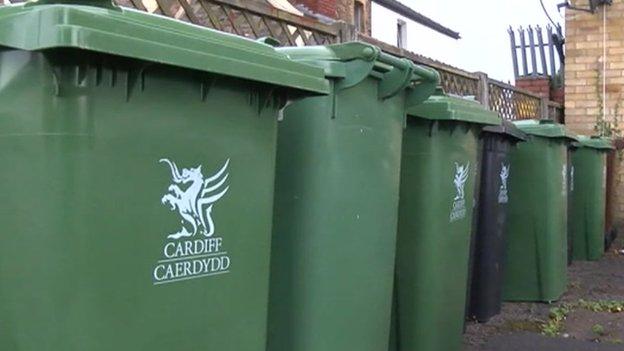
- Published20 August 2015

- Published12 May 2015
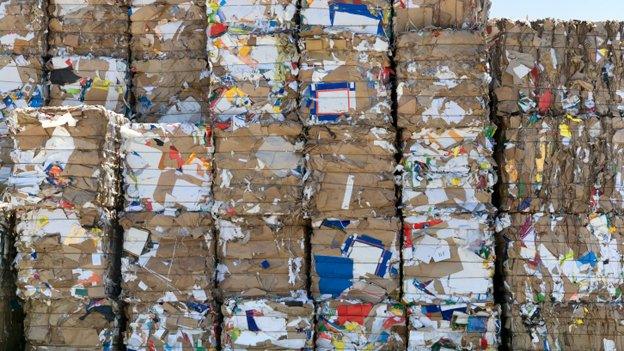
- Published20 August 2015
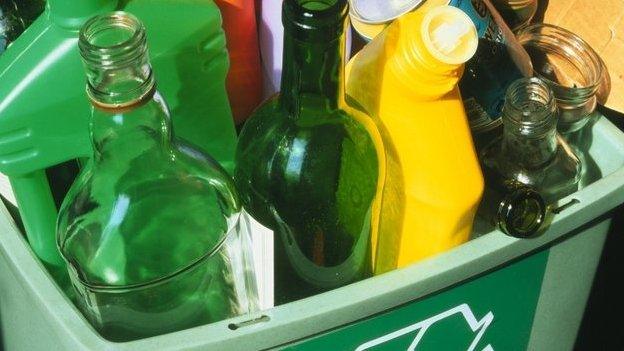
- Published20 August 2015
